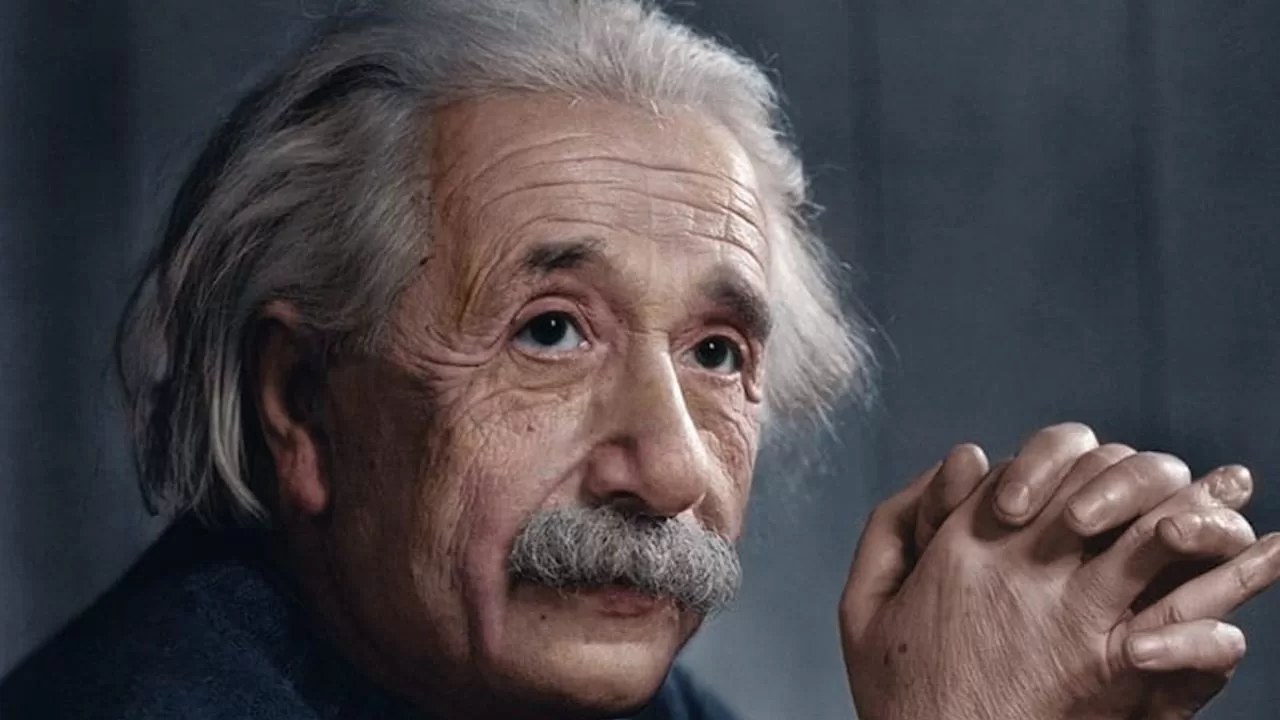In the cosmos of scientific luminaries, there exists a star that outshines others in brilliance and impact: Albert Einstein. A physicist, philosopher, humanitarian, and icon of popular culture, Einstein’s life and work shaped the landscape of theoretical physics and continue to ripple through science and society. This tale of a curious mind transcends time, offering lessons and inspiring a sense of wonderment in the process.
Born in Ulm, Germany, on March 14, 1879, to a middle-class Jewish family, Albert Einstein’s journey into the world of physics began as a spark of curiosity kindled during his childhood. An encounter with a compass at the age of five ignited his fascination with the invisible forces governing the universe. Though he was an indifferent student, Einstein was self-motivated and exhibited an innate knack for abstract thinking and problem-solving, signs of the scientific giant he was to become.
Despite several hurdles, including initial rejection from the Swiss Federal Polytechnic in Zurich due to his non-conformist approach, Einstein’s indomitable will persisted. He finally graduated in 1900 and embarked on a journey that would see him become the most influential physicist of the 20th century.
Einstein’s most prolific years, known as his Annus Mirabilis, or “miracle year,” came in 1905 when he published four groundbreaking papers while working as a patent examiner in Bern. These papers covered the photoelectric effect, Brownian motion, special relativity, and the equivalence of matter and energy (E=mc^2). Each one was a titan in its own right, revolutionizing scientific understanding in diverse realms.
The theory of special relativity, arguably Einstein’s most significant contribution, replaced the Newtonian notion of absolute space and time with a new framework where space and time were interwoven into a single continuum known as spacetime. This laid the foundation for his later development of the general theory of relativity, a majestic exposition of gravity as a geometric property of spacetime.
The development of general relativity was a feat of tremendous intellectual courage. It took Einstein nearly a decade of intense work to fully formulate it, culminating in its publication in 1915. The theory was confirmed during the 1919 solar eclipse when starlight was observed bending around the sun, matching Einstein’s predictions and catapulting him to international fame.
Einstein’s contributions extended beyond the realm of theoretical physics. His pacifist ideals and advocacy for civil rights and education were as integral to his persona as his scientific prowess. His influence permeated society, shaping discourse and inspiring generations.
Despite the groundbreaking nature of his work, Einstein wasn’t infallible. His initial reluctance to accept quantum mechanics, encapsulated in his famous quote, “God does not play dice with the universe,” was a rare misstep. Nonetheless, his criticism played a critical role in shaping the Copenhagen Interpretation, the most widely accepted interpretation of quantum mechanics.
His later years were devoted to the pursuit of a unified field theory, an endeavor that remained unfulfilled at his death in 1955. Yet, even in his setbacks, Einstein pushed the boundaries of knowledge and inspired future researchers.
Einstein’s work forms the backbone of modern physics. His theories of relativity underpin our understanding of the universe’s vastness, from the behavior of galaxies to the properties of black holes. His explanation of the photoelectric effect paved the way for quantum mechanics, transforming our comprehension of the microscopic world. His equation, E=mc^2, underscored the immense energy locked within matter, a principle crucial for nuclear power and weaponry.
Yet, Einstein’s legacy isn’t confined to his scientific contributions. His humanitarian efforts, philosophical musings, and advocacy for peace and education echo through the ages. His inquisitive spirit, creative genius, and the courage to challenge conventional wisdom remain sources of inspiration.
Albert Einstein was a beacon of intellect and humanity, demonstrating that science isn’t just about equations and experiments but is deeply intertwined with our lives, ethics, and worldview. His journey, from a curious boy in Ulm to a world-renowned physicist, stands as a testament to the power of curiosity, perseverance, and the courage to challenge the status quo.
In Einstein’s own words, “The important thing is not to stop questioning. Curiosity has its own reason for existence.” As we journey into the future, may we carry Einstein’s legacy of curiosity and courage, continuously seeking to comprehend the majestic cosmos that surrounds us. In understanding the universe, we come closer to understanding ourselves – a sentiment that embodies the essence of Albert Einstein’s life and work.
Keywords:
- Theoretical Physics: The branch of physics that uses mathematical models and abstractions to explain natural phenomena.
- Compass: A device that shows the direction relative to the geographic cardinal directions.
- Swiss Federal Polytechnic: A science, technology, engineering and mathematics university in the city of Zurich, Switzerland.
- Annus Mirabilis: Latin for “wonderful year” or “year of miracles,” used to refer to several individual years of major significance.
- Photoelectric Effect: The phenomenon where electrons are emitted from materials, typically metals, when they absorb energy from light.
- Brownian Motion: The random motion of particles suspended in a fluid resulting from their collision with the fast atoms or molecules in the gas or liquid.
- Special Relativity: A theory in physics that describes how the laws of physics work when you’re moving at a constant speed in a straight line.
- Spacetime: A mathematical model that combines space and time into a single continuum.
- General Theory of Relativity: Einstein’s theory that gravity is a result of the warping of spacetime caused by mass and energy.
- Copenhagen Interpretation: The most widely accepted interpretation of quantum mechanics, which asserts that physical systems generally do not have definite properties prior to being measured.
Key Takeaways:
- Albert Einstein, renowned for his contributions to theoretical physics, was a curious and non-conformist individual from childhood.
- His theories of special relativity and general relativity revolutionized our understanding of space, time, and gravity.
- Einstein’s famous equation, E=mc^2, highlighted the immense energy contained within matter, which became crucial for the development of nuclear technology.
- Despite his contributions to quantum mechanics, Einstein had initial reservations about its randomness.
- Einstein’s legacy extends beyond science into philosophy and humanitarianism, and he remains a source of inspiration for his inquisitive spirit and intellectual courage.
The Nuclear Age Articles
Unraveling The Atomic Age: The Life and Legacy of J. Robert Oppenheimer
Unveiling the Atom: The Manhattan Project’s Deep Impact on World History
Albert Einstein: The Maverick Mind that Revolutionized Physics
Leo Szilard: The Atomic Pioneer’s Crusade for Peace
The Ethical Odyssey: Exploring Morality in the Course of Scientific Discovery
Los Alamos National Laboratory: Navigating the Past, Present, and Future of Scientific Innovation
The Cold War: Superpowers in the Ballet of Weaponry
Nuclear Proliferation: The Ever-Present Global Challenge
Interplay of Science and Politics: The Unsung Dance of Progress
Enrico Fermi: Mastermind Behind the Nuclear Age
From Atomic To Thermonuclear: A Detailed Examination of Nuclear Weapon Evolution
The Unforgotten Echoes: Hiroshima and Nagasaki’s Tale of Nuclear Devastation and Human Resilience
Living Under the Mushroom Cloud: The Psychological Impact of the Nuclear Age
Nuclear Fallout: Unmasking the Invisible Threat to Health and Environment
The Power and Peril of Nuclear Energy: A Balanced Perspective
Radiation Sickness: Unveiling the Hidden Costs of the Nuclear Age
From Darkness to Light: Lessons from Chernobyl and Fukushima
Deciphering the Nuclear Waste Conundrum: The Path Towards Sustainable Solutions
Guarding the World from Nuclear Threats: International Laws for Nuclear Disarmament
Journey to Peace: Unraveling the Path to Global Nuclear Disarmament
Culture Echoes of the Atomic Age: Artistic Narratives in the Nuclear Era












0 Comments